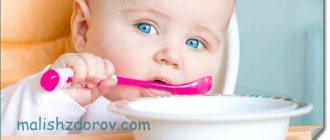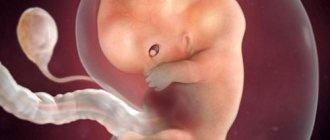22 Nov03759
Irina Ryukhova , AKEV consultant, IBCLC, coordinator of the “New Level” project: For many children born in a maternity hospital, supplementary feeding with formula becomes almost inevitable. In maternity hospitals that have Baby Friendly (BF) status, the risk of supplementing with formula is less - but it often turns out that in order for a barely born baby to immediately receive a bottle of formula, the mother needs to show some persistence. If she doesn’t do this, the baby will receive the formula one way or another, simply because most doctors believe that there is no particular harm in a small bottle of formula... But is this true?
Harm to breastfeeding
It is very important that a newborn baby develops the ability to feed on his mother’s breast. Despite the abundant advertising of “physiological” nipples and formulas “as close as possible to breast milk,” no nipples or formulas are similar to mother’s breasts and mother’s milk. The child sucks nipples in a fundamentally different way, using only some muscles of the maxillofacial apparatus and creating a vacuum, this is quite enough to receive nutrition from the nipple. But to obtain milk from the mother’s breast is not enough. As a result, a child who has been sucking a pacifier for some time begins to try to act in the same way towards his mother’s breast, and often nothing works out for him - he throws the breast, cries and demands to be fed in a simpler way...
At the same time, the pacifier, unlike the mother’s breast, can not only be sucked, but also chewed as desired, and the child transfers this attitude to the breast. Just a couple of feedings from a nipple in the first days of life may be enough for the baby to stop latching on correctly and for the mother to begin to develop painful cracks on her nipples from such “chewing.” As a result, after receiving the formula from the bottle, breastfeeding for the mother turns into an alternation of baby cries with throwing the breast and “chewing” painful cracks. The mother herself usually thinks that this is because she “has no milk, the baby is hungry”, she feeds more actively with formula, the breasts are less and less stimulated to produce new milk - and breastfeeding can stop very quickly or because the baby completely refuses to take the breast , or due to “missing milk”.
Medical statistics themselves confirm this: if a child receives anything else before breastfeeding (water, glucose solution, formula - whatever) - the risk of infection increases, the likelihood of subsequent exclusive breastfeeding decreases and its duration decreases (Kramer, M ., Chalmers, B., Hodnett, E., & PROBIT Study Group, 2001)
Advantages and disadvantages of formula feeding
Breast milk substitutes are sold in dry form. Cooking takes a little time. But why do pediatricians strongly advise breastfeeding? Are the beneficial properties of baby food limited? Let's figure it out.
Positive sides:
- any family member can feed the baby, the mother gets an additional opportunity to relax;
- the exact amount of food eaten in one feeding is known;
- In case of allergic reactions, there is no need to rack your brain about what caused the negative manifestations.
Flaws:
- During preparation, it is important to strictly observe the proportions, sterility of the bottle and other utensils. Violation of the rules threatens infection, indigestion, and deterioration of well-being;
- Artificial babies more often develop constipation/loose stools and colic. Many babies spit up frequently;
- the diluted powder should be given immediately; the bottle should not be taken on the road or for a walk;
- dry formulas for newborns and children up to one year old (even the most expensive and high-quality ones) do not strengthen the immune system. Only breast milk contains special enzymes that increase the body's defenses;
- the forced transition to artificial feeding forces a woman to constantly pump and worsens the condition of her breasts. Milk stagnation is often observed and mastitis develops.
Find out more about the symptoms and treatment of pyelonephritis in children.
Treatment of a runny nose at home using folk remedies is written in this article.
Damage to maternal health
It's not that big, but it's there. Under the influence of frequent breastfeeding in the first days of life, the mother releases the hormone oxytocin, which helps the active contraction of the uterus. That is why, if a child is breastfed frequently, the risk of postpartum complications becomes noticeably lower (Dordević G, Jovanović B, Dordević M. Med Pregl. 2008; Leung AK, Sauve RS. 2005). Accordingly, if a mother replaces part of her breastfeeding with a bottle with a pacifier, which reduces the baby’s interest in sucking, the involution of the uterus is not as active, and the likelihood of postpartum complications increases.
In addition, active feeding in the first days after childbirth is very important from the point of view of maintaining the mother’s peace of mind. After childbirth, it is important for a woman’s body to receive hormonal confirmation that the birth was completed successfully - this means that the baby should be attached to the breast quite often, and thereby send signals that everything is fine with him and his health. In the absence of feedings, the mother’s body, not receiving such signals, “believes” that there is no child - and this is a strong factor for the development of postpartum depression . Regarding postpartum depression, the following scientific theory has recently been put forward: during pregnancy, in preparation for breastfeeding, the expectant mother forms a special depot of vitamin A, which must be used up during feeding (colostrum is especially rich in vitamin A, it is a natural antioxidant that protects vision and helping to develop the baby’s immunity). If these reserves are not used up in a timely manner, due to the fact that a woman does not breastfeed, the increased concentration of vitamin A in her body causes toxic effects associated with mood swings, impaired mental abilities and the development of depression (Mawson AR, Xueyuan W., 2013) . All this means that the less often a woman puts her baby to her breast in the first days of life (which will inevitably happen when supplementing with formula), the worse she feels.
The best baby formula with goat milk
This option for baby food appeared on domestic markets not so long ago, but has already gained great popularity. This is due to the theory that goat’s milk is absorbed by an immature child’s body more easily than cow’s milk and in its properties is equivalent to mother’s breast milk. It is also suitable for feeding newborns who are allergic to cow's milk. At the same time, the choice of mothers who decide to switch to such a product is small - there are only 4 similar brands on the market, which will be described in detail.
Nanny
A New Zealand product that is rightfully considered the best goat milk formula. Its main difference from products of other brands is the high content of casein proteins, which are easier for an immature body to digest. Another feature is the absence of additional processing of milk, which ensures maximum preservation of its beneficial qualities. In addition, the product of this brand does not contain palm oil. All this together ensures a minimal risk of allergies, which is very important when it comes to a newborn baby.
Advantages:
- high quality products
- no palm oil or whey protein
- minimal risk of allergies
Flaws:
- high price
Infant formula from a Spanish manufacturer contains casein and whey proteins in equal proportions. The product did not manage to gain much popularity, as it appeared on the shelves relatively recently. However, mothers who have tried it note that milk based on it has a pleasant sweet taste that children like. Statistics on allergic reactions are also minimal.
Advantages:
- proportional ratio of whey and casein proteins
- rich in prebiotics
Flaws:
- difficult to find (not sold in all stores)
Cabrita
Baby food from Holland containing the Digest X fat complex, the patent for which belongs to the manufacturer. This type of fat is designed to improve digestion and also help increase calcium absorption. Such indicators are very important for baby nutrition in the first months after birth. According to reviews from most mothers, Cabrita is the best value for money among goat milk formulas.
Advantages:
- content of a special complex of fats
- optimal balance between cost and product quality
Read also…. First month of pregnancy
Flaws:
- hard to find in stores
MDmil SP Goat
Infant formula with a good composition, jointly produced by Switzerland and Spain. Unlike other brands of baby food, the saturation of milk with proteins and salts is within the normal range (in other products it either exceeds the permissible limits or is at their upper limit). This optimal combination allows you to avoid unnecessary stress on children's organs such as the intestines and kidneys. In addition, here the ratio of omega acids is closest to breast milk, which has a positive effect on the development of the children's nervous system.
Advantages:
- optimal composition with minimal risk of allergies
- normalization of stool and absence of colic when consumed
Flaws:
- high price
It is important to know! Never store dry formula in the open, as there are microorganisms in the air that can also get into the food.
We recommend watching the Test Purchase video about baby formula!
Harm to the child's health
This, of course, is the most important thing - formula feeding poses a serious risk to the baby’s health! A newly born baby’s digestive and urinary systems are still poorly functioning; they are designed specifically to receive very small volumes of highly nutritious liquid, such as colostrum. Colostrum is an extremely valuable substance, in which a high content of fats, proteins, vitamins is combined with a very high content of immune bodies, which immediately begin to work to protect the child’s body from infections that he may encounter. Colostrum is so well balanced in composition that attempts to isolate individual valuable substances from it simply did not work. There is very little of it, but this is enough to cover the very initial needs of the child, who is immediately born with a supply of moisture and salts necessary to pass through the birth canal and then so that the child can receive a very small amount of nutrition in the form of colostrum for several days.
Considering that a child does not have enough food, “after all, there are only a few drops” is a mistake. Let us remember that the mixture as such appeared a little more than a hundred years ago; nature did not count on its appearance! For thousands of years of evolution, in the first days after birth, human babies received only colostrum, because the newborn’s body simply does not need a significant load on the digestive tract and kidneys in the form of large volumes of nutrition. It is funny and sad that mothers who give their baby formula of their own choosing most often think that this is necessary so that the child does not starve.
In one Italian study on this subject, it was found that children whose mothers exclusively breastfed had less weight loss than those whose mothers supplemented with formula! Weight loss with exclusive breastfeeding averaged 215 + - 73 g, or an average of 6.3 + - 2.0% of birth weight, and with bottle feeding - an average of 255 + - 93 g, or an average of 7.5 +-2.4% of birth weight (Davanzo R, 2007). At the same time, newborns who were fed formula were 3.9 times more likely to develop severe hypernatremia with dehydration! (Davanzo R, 2007). You can also look at a larger and more recent study that confirms the same data: Formula promotes weight loss in newborns.
What happens if we think that “he’s hungry, let’s give him a bottle of formula”? First of all, there is a sharp interference in the process of normal formation of the child’s microflora. In general, the two main factors responsible for the good microflora of a child in the first years of life are the following:
- natural birth or caesarean section;
- feeding a child with human or non-human milk.
You can read more about this in the information Caesarean section and artificial feeding have long-term health consequences.
You need to understand well that the mixture is made from vegetable (not even animal) oils and animal milk, intended by nature itself for feeding young cattle. Or small, if we are talking about goat milk, but the essence does not change much. From time to time, formula manufacturers manage to isolate one of the about 700 components found in breast milk and add it to the formula, usually there is a big hype around this: “now our formula is even closer in composition to breast milk, it’s almost the same! .” But the most modern mixtures today have no more than 50 components, and remain essentially unsuitable food for human babies .
The result is the following: babies who are breastfed have an environment in the intestines of 5.1-5.4 pH, represented mainly by bifidobacteria with a small amount of pathogenic flora. Formula-fed babies have a gut pH of about 5.9-7.3 with a variety of putrefactive bacterial flora . In children who are partially breastfed (with additional formula feeding) during the newborn period, the pH fluctuates between 5.7-6.0, and only in the second month of life, supplementary formula feeding leads to the acidity rising “only” to 5.45. Moreover, if in the first week of life the child was fed only formula, the development of healthy intestinal flora occurs with a time delay, and it is very likely that the baby will never again have the same balance of flora as a breastfeeding child. (Bullen CL, Tearle PV, Stewart MG, 1977)
Even if the baby received only colostrum for some time, and then breast milk, when supplemented with formula, his flora very quickly becomes the same as that of artificial children, that is, bifidobacteria no longer dominate, and colonization with harmful anaerobic flora develops. (Mackie, Sghir, Gaskins, 1999). One feeding of the formula per day is enough for the process of negative changes in the microflora in the child’s intestines to begin! If the child has been completely switched to formula, within 24 hours the intestinal ecosystem will be dominated by harmful intestinal flora: enterobacteria, enterococci, clostridia, anaerobic streptococci (Gerstley, Howell, Nagel, 1982). This is how the prerequisites for dysbacteriosis, colic, abdominal pain, gas and other infant problems appear... At the same time, if after temporary supplementary feeding with formula the baby begins to receive only breast milk again, it will take from 2 to 4 weeks just to return to the condition in which the intestines a gram-positive flora is maintained (Brown & Bosworth, 1992; Gerstley, Howell, Nagel, 1982).
In addition to the most immediate consequences in the form of an upset tummy, much more distant consequences are also likely. Infants at birth have a functionally immature and leaky gut. The mucous membranes of the gastrointestinal tract will mature enough only after a few months to protect the child’s body from the influence of foreign proteins. The protective factors of colostrum and breast milk protect the intestines, providing it with passive stability during this time. The mixture, on the contrary, is itself a high-risk factor due to the content of those same foreign proteins (as cow's milk proteins are for the human body). Therefore, with a hereditary tendency to allergies, even one supplementary feeding with formula may be enough for the child to acquire intolerance to cow's milk protein, which can last a lifetime (Host, Husby, Osterballe, 1988; Host, 1991).
With appropriate heredity, early supplementation with formula increases the risk of developing insulin-dependent diabetes in infants and children. (Mayer, 1988; Karjalainen, 1992) The risk of developing necrotizing enterocolitis is significantly increased - several times higher even in the case of mixed feeding (40% breast milk plus formula) compared to exclusive breastfeeding, and in the case of complete artificial feeding, mortality increases significantly and is consistently associated with bottle feeding (Sullivan et al, 2010). Now researchers have come to the firm conclusion that supplementary feeding with formula in the first days of life is metabolic stress for the child .
Artificial feeding can also bring many other problems for the baby’s health - an increased risk of otitis media, pneumonia, gastrointestinal disorders and much more, but you don’t even need to delve into this topic, because we are talking about what problems supplementary feeding with formula can bring to a baby albeit in small quantities, but precisely in the very first days of life.
Doctors' opinion: why you shouldn't give adult food at 2 months
Modern pediatricians are against feeding infants up to 6 months of age. On this issue, they fully support the point of view of their Western colleagues, who found that:
- Until 5-6 months of age, the child’s body is not able to absorb proteins that are not part of breast milk. This is due to the reduced activity of hydrochloric acid and some enzymes. Children digest casein, a protein found in cow's milk, especially poorly. In some cases, eating inappropriate foods can lead to serious metabolic changes.
- The body of a baby up to 5-6 months does not digest carbohydrates well. The activity of amylase, which is responsible for their breakdown, is only 10% of the level in adults. Therefore, there is absolutely no benefit for the baby in the early introduction of complementary foods in the form of cereal or milk-cereal porridges and baby cookies.
- By 6 months, children's ejection reflex fades away. Over time, they learn to push food through the mouth with their tongue and learn to swallow it. The same applies to liquids. Experts believe that the reflex protects the child from suffocation. If a foreign object gets into the baby’s mouth, the tongue immediately protrudes out, pushing out the potential threat. To check whether the baby’s reflex has disappeared, give him some water from a spoon. If he pushed her out, then it’s too early to introduce complementary foods.
- Foreign doctors believe that early introduction of complementary foods leads to excessive obesity. After all, when eating from the breast or bottle, the baby himself is able to regulate the amount of food he needs. Caring parents, feeding the baby from a spoon, forget that the volume of his stomach is equal to his fist. Therefore, they often overfeed their babies, which causes them to have stomach ache and problems with the functioning of their internal organs. In addition, diabetes and celiac disease may develop at an older age.
- In children who are introduced to early complementary feeding, the risk of developing food allergies and eczema increases.
- Doctors believe that foods thicker than mother's milk or high-quality formula in an infant's diet place too much stress on the liver and pancreas. And you may be bewildered and object, but what about mother’s milk, which has a fat content of 4%? The natural product produced by your mammary glands contains certain enzymes that help your baby digest milk. Did you know that it is normal to have no bowel movements for 5-7 days while breastfeeding? This is explained by the fact that mother’s milk is completely absorbed by the child’s body.
- Many pediatricians are inclined to not introduce food into the baby’s diet until his first teeth erupt (that is, until 6-7 months). Keep in mind that the toddler’s readiness for complementary feeding is not related only to the fact that your child has become toothy. If he has his first tooth at 3-4 months, then this is not a reason to cook him porridge and vegetable and fruit purees.
- Early complementary feeding interferes with natural feeding. The baby begins to suckle less, and because of this, the mother's milk production rapidly decreases.
Pediatricians believe that even if the mother was unable to establish lactation and the baby lacks milk, toddlers do not need to make nutritional adjustments until 4-5 months by introducing complementary foods into their diet. They can receive all the necessary nutrients from an adapted milk formula.
Baby development at two months: video
Finally, we want to talk about a very important aspect. If you are wondering whether it is possible to give an apple or carrot juice to a baby at such a tender age, because it contains so many vitamins and nutrients, then it is better to eat it yourself. As a rule, trying to provide the child with the highest quality nutrition and complementary feeding, mothers forget that they themselves need to eat as well as possible. Include freshly prepared natural juices, vegetable salads with herbs, lean meats and fish, cereals and dried fruits in your diet, and your baby will definitely get the right amount of macro- and microelements from your milk.

Until the age of six months, the baby does not need to be given anything other than breast milk or an adapted milk formula if your baby is bottle-fed. Do not listen to either grandmothers or “experts” who advise feeding your child purees and cereals at such an early age. Trust your intuition and do not trust others unconditionally.
Harm of mixtures as such
Some mothers, even knowing that formula may pose a risk to the child’s health, believe that everything depends on the health status of the particular baby. And if the baby is healthy, then the mixture simply cannot harm him.
Alas, this is not true. Simply because we don't actually know what's actually in the formula jars. Oh, of course, advertising assures us that manufacturers organize strict quality control of mixtures! But if we study the history of recalls of mixtures from sale , then we will not see anything there - mixtures were recalled due to contamination with salmonella and radioactive particles, due to the content of broken glass and live insects, due to a lack of vital vitamins and excess content of heavy metals ... Scandals break out in one or another country of the world due to serious illnesses and deaths of infants , and formula manufacturers continue to claim that their nutrition is almost better than what the mother’s breast produces!
After healthy babies died in several maternity wards in the United States due to supplementation with formula containing life-threatening bacteria in sealed boxes, the US Food and Drug Administration banned the use of formula in all neonatal units ( Enterobacter sakazakii, Salmonella, Clostriduim botulinum, Staphylococcus aureus and other Enterobacter species; Joint FAO/WHO Expert Workshop on enterobactr sakazakii and other microorganisms in Powdered Infant Formula. 2004). But we still continue to think that there is nothing wrong with a bottle of formula...
How to choose the best formula for a newborn: Komarovsky’s advice
- Buy only those mixtures that can be easily found in stores in your city.
- Carefully study the information on the packaging. Not only the daily dose and preparation instructions should be indicated there. Look for a special table in which you can find data on the baby’s weight, age and nutritional standards corresponding to these data.
- Do not take specialized food unless there is a reason for it.
- For newborns, it is better to choose a highly adapted milk formula. Then, with age, you can switch to less and partially adapted ones.
- If the formula is suitable for a newborn and does not cause undesirable reactions, then it is better not to change it often and use it for constant nutrition or supplementary feeding.
- Buy products from companies that have a food line for all ages. This will not cause stress to your digestive system when switching to other brands as you age.
Read also…. Postpartum depression: causes, symptoms, consequences and treatment
Be sure to monitor the baby after introducing artificial nutrition. If there are no problems with digestion or skin rashes, then the best mixture has been chosen correctly.
What to do?
There are situations when it is objectively impossible to do without supplementary feeding with formula ( they are listed HERE ). You need to understand that the mixture in this case acts as a lesser evil - it is worse not to give the mixture than to give the mixture . But if the mother has a choice whether to give formula or not, it is better not to give it . Let us remind you that in terms of the degree of preference for supplementary feeding for infants, the order is as follows: breastfeeding the child from his own mother; feeding your own mother's expressed milk; feeding another woman or another woman's expressed milk; and only after it is impossible to implement any of these options should the choice of mixture be made. If you feel like you don’t have enough milk, or are just wondering if you need to give formula in some difficult situation, contact a natural feeding consultant, they will help you assess the situation, weigh the risks and establish breastfeeding!
See also: Irina Ryukhova’s webinar “Introduction to motherhood” Irina Ryukhova’s webinar series “Breastfeeding. Basics"Webinar by Irina Ryukhova "Feeding a growing baby from 6 to 12 months" Webinar by Irina Ryukhova "Feeding after a year"
The material is presented by the project “New Level. Advanced training for breastfeeding consultants"
The best baby formula for premature babies
Babies born prematurely require special care and attention. An organism that has not had time to fully form and prepare for birth is especially sensitive. Therefore, to feed them, you need to choose special children's products that fully meet the needs of the little person. They take into account all the features of such fragile babies: the use of proteins that are easily digestible, an increased content of vitamins and microelements, and an increase in the energy value of the product for faster weight gain. This line is also recommended to reduce the risk of allergic reactions.
NUTRILON PRE
Infant formula with bifidobacteria and reduced lactose. The percentage of whey milk content here is the highest, which brings it as close as possible to breast milk. Enriched with polyunsaturated fatty acids, vital vitamins and microelements.
Advantages:
- optimal composition specifically for premature babies
- minimal risk of allergies and other negative reactions
- as close to breast milk as possible
Flaws:
- high price
SIMILAC (ABBOTT) NEOSHUR
The mixture is recognized as the best for feeding children born prematurely. It practically does not contain lactose; instead, maltodextrin is used, which provides not only the sweet taste of the product, but also high energy value, which promotes rapid weight gain. This indicator is very important for this category of children's products. In addition, it is perfect for children suffering from increased gas formation and colic, due to the minimal load on the digestive system. It does not contain palm oil, but there is a special herbal complex that helps relieve constipation and soften stool.
Read also…. How to remove belly fat after childbirth
Advantages:
- composition that takes into account all the characteristics of the body of a premature baby
- no palm oil
- perfectly absorbed by children's weak bodies
Flaws:
- not detected











